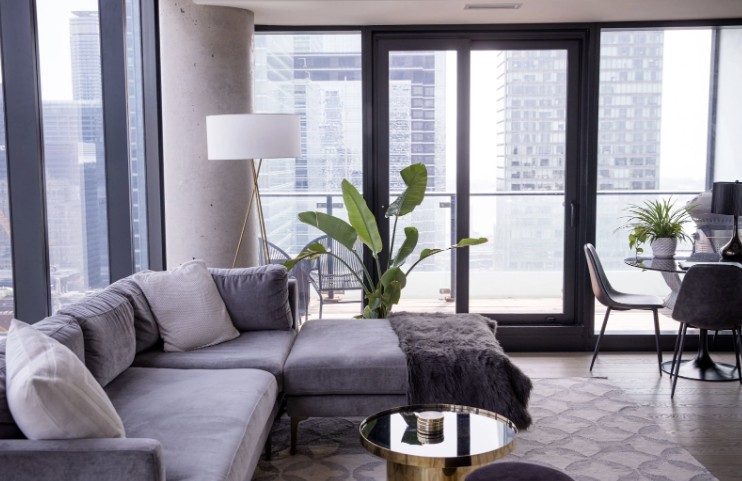You know what's killing your rental property's appeal? Wasted space. That spare bedroom gathering dust, the dining room nobody uses, the office that's empty half the week. Today's renters want more from every square foot, and frankly, who can blame them?
The rental market has shifted dramatically. According to a 2023 Joint Center for Housing Studies report from Harvard University, renters now occupy their spaces differently than they did a decade ago. Remote work, side hustles, fitness routines, and entertainment all happen under one roof. This isn't just a trend. It's the new reality of how people live.
Why Single-Purpose Rooms Are Becoming Obsolete
Think about it. When was the last time you saw a formal dining room actually used for its intended purpose more than twice a month? These dedicated spaces made sense when life compartmentalized neatly into work, home, and social spheres. But that world doesn't exist anymore.
Single-purpose design assumes renters live predictable, structured lives. The reality? Your tenant might be a graphic designer who needs workspace during the day, a yoga instructor streaming classes in the evening, and a parent hosting game nights on weekends. One room. Multiple needs.
Christopher Alexander's research in "A Pattern Language" explored how spaces that accommodate varied uses create more livable environments. His work from the 1970s predicted what we're seeing now: rigid room designations create friction in daily life.
The Multifunctional Advantage
Here's where things get interesting. Multifunctional spaces don't just work better for renters. They work better for your bottom line.
A study by the National Apartment Association found that properties featuring flexible spaces commanded 12-18% higher rents in urban markets. Why? Because you're essentially giving renters more property for the same footprint. A 700-square-foot apartment with smart multifunctional design can feel and function like 900 square feet.
Consider the Murphy bed setup. What seems like a simple fold-away bed actually transforms a studio or one-bedroom into a space that breathes. During the day, that bedroom becomes a proper living area, home office, or workout zone. At night, it converts back. You've just doubled the utility of those square feet.
Real-world transformations that work:
Guest bedroom doubles as home office with a sleeper sofa and built-in desk system
Living rooms incorporate dining functions through extendable coffee tables and stackable seating
Entryways serve as mudrooms, package stations, and bike storage with modular shelving
Kitchen islands function as prep space, dining tables, and work surfaces
Design Elements That Make It Work
So how do you actually create these flexible spaces without ending up with rooms that do nothing well? The secret lies in thoughtful infrastructure.
Start with furniture that moves or transforms. Resource Furniture, a company specializing in space-saving solutions, reports that their modular systems increase in rental properties by 34% year over year. Their clients aren't just cramped city apartments. Suburban rentals benefit too because renters value options.
Lighting matters more than you'd think. Track lighting, dimmer switches, and multiple light sources allow the same space to shift moods. Bright task lighting for work hours, ambient lighting for relaxation, accent lighting for entertainment. Same room, different atmosphere.
Storage integration separates amateur multifunctional design from professional execution. Built-in shelving, hidden compartments, and vertical storage solutions let renters quickly transform spaces without clutter taking over. Nobody wants their yoga mat visible during a Zoom meeting.
Using sliding glass room dividers gives renters the power to create temporary zones without permanent walls. Open for entertaining, closed for privacy or focus work. This flexibility appeals especially to younger renters who value both community spaces and personal boundaries.
What This Means for Your Investment
Let's talk numbers. Renovation costs for multifunctional design typically run 15-25% higher than basic updates. But tenant retention tells the real story. According to apartment management platform AppFolio's 2024 data analysis, properties with flexible spaces saw 23% longer average tenancy periods.
Lower turnover means fewer vacancy periods, reduced marketing costs, and less wear from move-ins and move-outs. That 20% extra you spent upfront? You'll recoup it within the first lease renewal.
Plus, multifunctional properties photograph better. In an era where 85% of renters begin their search online (per the National Association of Realtors), those listing photos need to pop. A room that shows multiple uses in different shots tells a compelling story about lifestyle possibilities.
Getting Started Without Overcomplicating Things
You don't need to gut-renovate everything tomorrow. Start small and strategic.
Replace standard closets with modular systems. Swap fixed lighting for adjustable options. Choose furniture packages that demonstrate flexibility rather than locking rooms into single purposes. These changes cost less but signal to prospective tenants that you understand how they actually live.
The biggest mistake? Trying to make every space do everything. That's not multifunctional - that's just confusing. Each area should have two or three clear purposes, maximum. A bedroom-office-guest room works. A bedroom-office-guest room-gym-dining room doesn't.
Remember, you're not just renting space anymore. You're renting possibility. And in today's market, possibility is what keeps units filled and rents competitive.










